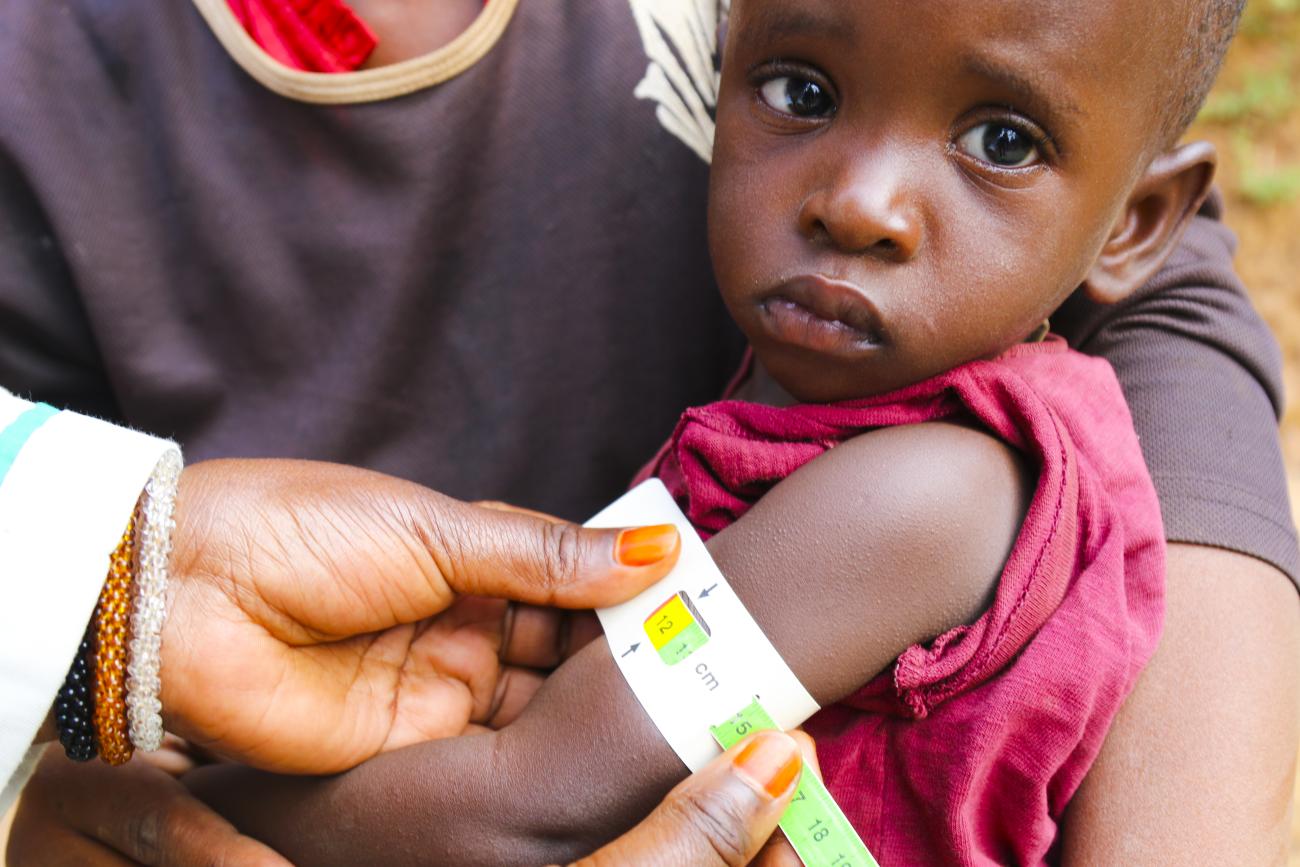In the heart of Ngororero hills in western Rwanda, a story of transformation and hope unfolds. It's a mid-day field trip, and WFP staff meet Clementine, a dedicated nutritionist at the Muramba health centre, embarking on a regular field trip in Rugambiro village, Hindiro sector.
The team’s first destination is the home of Immaculee Tuyisenge, a 23-year-old mother of two. As they approach, they catch a glimpse of Immaculee sitting in her small house, gently playing with her second-born child Ornella. However, something immediately strikes them as unusual: the youngest member of the family, one-year-and-eight-month-old Ornella Uwihirwe, appears unhappy and hardly smiles.
With a warm greeting, they approach Immaculee and inquire about Ornella, and why she seems not happy.
Immaculee's response was: "She has not eaten since morning," she sadly replies.
Clementine recognises the gravity of the situation. She observes that Ornella appears weak and suspects that she may have missed out on nutritious food for some time. Without hesitation, Clementine takes immediate action, grabbing her measuring tape to conduct the mid-upper arm circumference (MUAC) assessment, length (height 75.0 cm), and weight (8.4kgs) in relation to her 20 months age—a vital tool for quickly identifying acute and chronic malnutrition in children.
As Clementine gently wraps the measuring tape around Ornella's tiny arm, a sense of anticipation hangs in the air. Unfortunately, the result is not what she hoped for—Ornella's MUAC falls into the yellow zone, indicating that she already has double burden of malnutrition (both moderate acute malnutrition and moderate stunting).
Clementine ensures that all this data be entered into the WHO Anthropometric software—an innovative tool introduced by the United Nations joint nutrition programme through the Swiss Agency for Development and Cooperation (SDC)-funded One UN Joint Nutrition Programme implemented by the World Food Programme (WFP), the United Nations Children’s Fund (UNICEF), the World Health Organization (WHO), and the Food and Agriculture Organization of the United Nations (FAO).
The Significance of the WHO Anthro Software
Clementine elaborates on the significance of the Anthro software, explaining that it plays a pivotal role in assessing the nutritional status of children and adults. Beyond assessment, the software plays a critical role in early identification of malnutrition among children under five years and allows nutritionists to act and prevent children from falling into chronic malnutrition.
According to the Comprehensive Food Security and Vulnerability Analysis (CFSVA 2021), Rwanda's national stunting rates remain high at 32.4 percent despite a significant decrease from 34.9% in 2018. The most direct causes of malnutrition in children under five years have been identified as insufficient food intake and a lack of growth-promoting nutrients and infectious diseases.
In addressing these root causes of malnutrition, the UN stepped in and worked hand in hand with the government to initiate a joint nutrition programme to train parents on feeding infants and young children with a minimum acceptable diet. This effort aimed to ensure that every child had the opportunity for appropriate growth and development.
The UN also empowers healthcare workers and data managers, enabling them to rapidly identify a child's nutritional status and obtain precise nutrition data using Anthro software.
Clementine says that it has transformed her daily work as a community health worker—increasing her capacity to serve more than 150 children a day, compared to just 50 in the past. The software simplifies the process, automating data generation, in stark contrast to the imprecise calculators that were previously employed.
The use of the software can translate into significant cost savings for the Ministry of Health, eliminating the need to print register books and growth charts—nearly 3 billion Rwanda francs per year can drastically cut down on expenses.
However, it's not just about numbers and cost savings; the use of software revolutionises the precision of data analysis and interpretation. This, in turn, elevates the monitoring and early-stage treatment of children like Ornella.
As the team sits with Immaculee and Ornella, the impact of the WHO Anthro software becomes vividly clear. The software isn't just a tool; it's a lifeline that connects communities, healthcare providers, and nutritionists in the shared goal of nurturing healthier futures.
In the framework of their story, there's a larger narrative—United Nations, and the Government's collaborative efforts supported by SDC to scale up nutrition interventions in the most affected rural areas, leaving no child behind. This Joint Programme also greatly contributes to UNSDCF. The third outcome in the pillar of social transformation envisions that by 2024, people in Rwanda, particularly the most vulnerable, enjoy increased and equitable access to quality education, health, nutrition and water, sanitation, and hygiene (wash) services.





